
After working as a zookeeper for over 25 years, it is rewarding to have the opportunity to see the species you care for in their natural habitats and visit breeding facilities working towards reintroducing these species back to the wild—and I did!
In the winter of 2017, I visited the Vulture Breeding and Rehabilitation Center Green Balkans in Stara Zagora, Bulgaria. They are involved in the breeding and reintroduction of several raptor species including the lesser kestrel, saker falcon, bearded vulture (also known as the lammergeier), and the endangered Egyptian vulture. They have a live webcam on the Egyptian vultures during the breeding season. Below is a photo of an adult in a breeding pen; to tell the males from the females, they add some dye to the head and chest feathers.
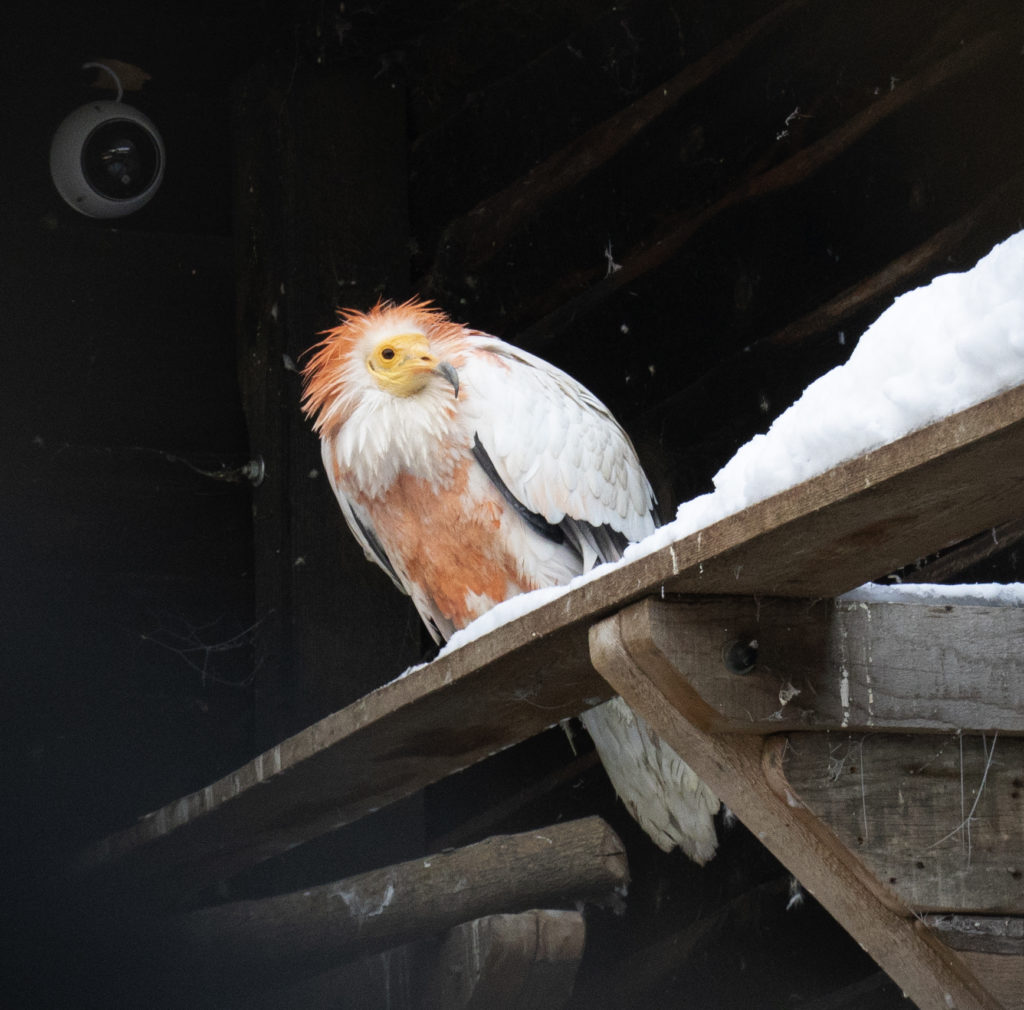
After leaving Stara Zagora, I went to the Vulture Center at the Kresna Gorge to see griffon vultures (also known as Eurasian griffons). I arrived just in time to watch several birds feeding on a carcass by the river. Some more flew in and landed next to the group feeding at the carcass, typical vulture squabbling ensued.
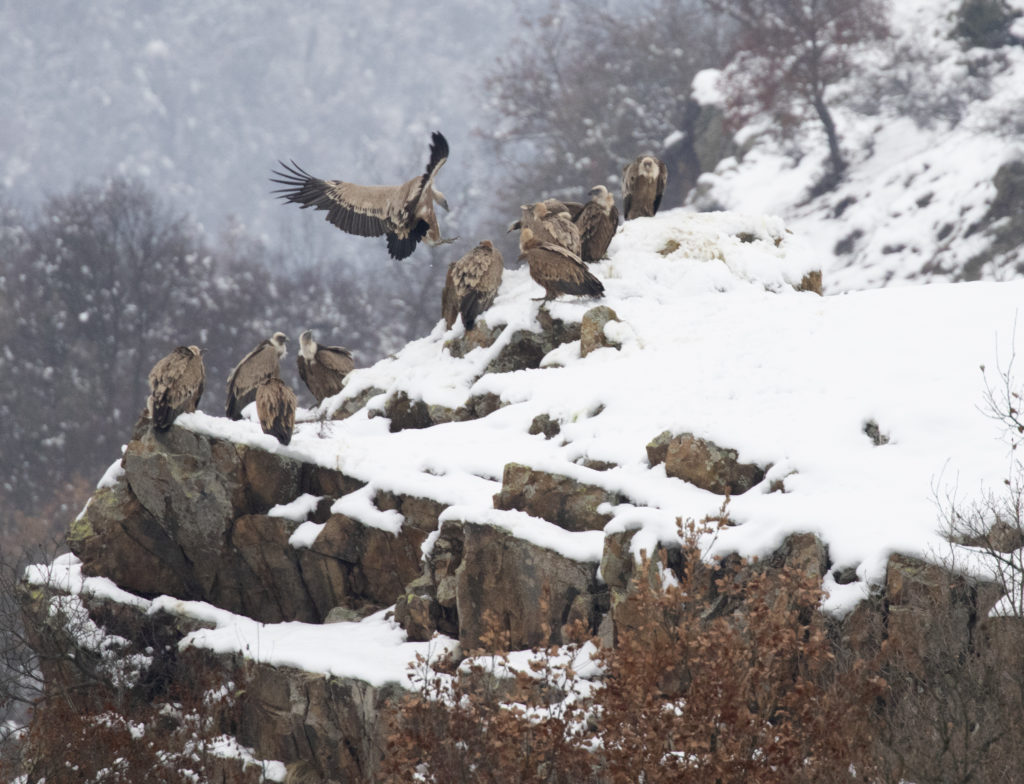
After feeding, they would fly to this cliff and perch. Since it was winter, the Egyptian vultures were in Africa at this time and I didn’t expect to see any in the wild in Bulgaria.
In 2018, I returned to Kresna Gorge, but this time, in the summer, and saw griffon vultures perched high on the cliffs and flying above us and one Egyptian vulture flying. The birds themselves blend in with the cliff face; however, to find them, all you need to do is look for the whitewash on the rocks.
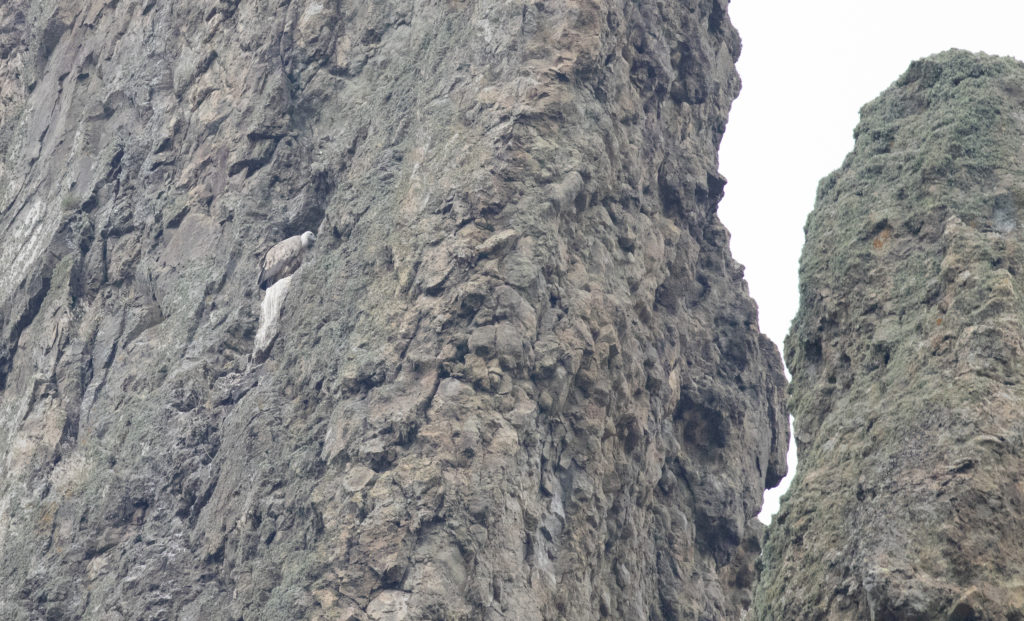
It was also thrilling to see an Egyptian vulture flying in the area. This bird is a long-distance flier that spends winter in Africa and makes the long journey north to its breeding grounds in Europe and Asia. Along their migration they fulfill their duty as nature’s clean-up crew, however, they face several human-related dangers along the way. Poisoning, collision with power lines, and direct human persecution are the main causes of death throughout their range.
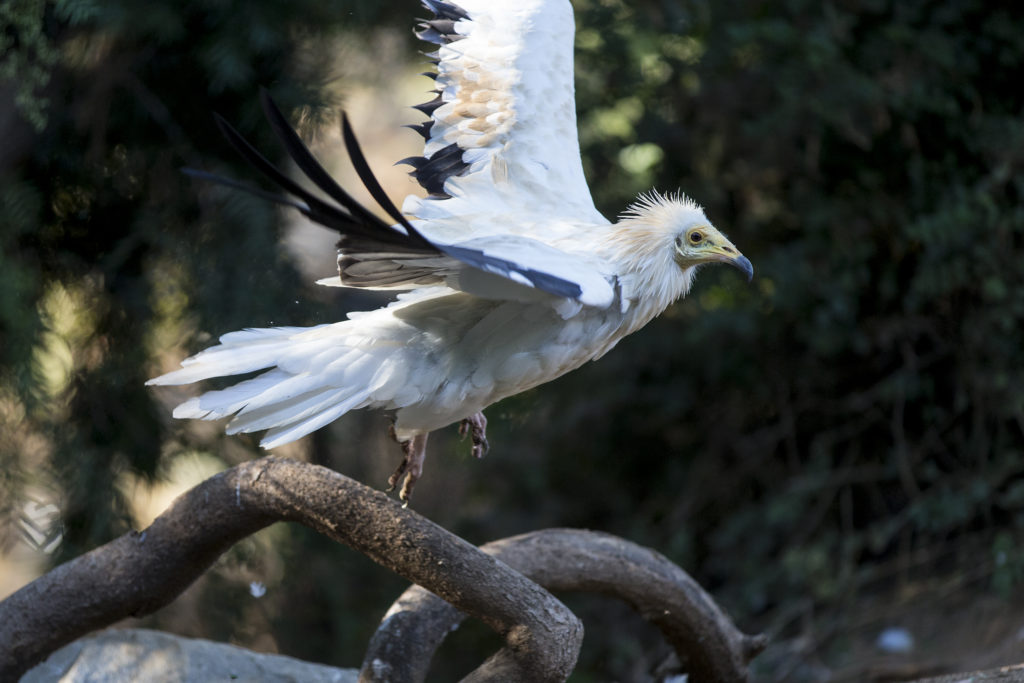
Poachers in African countries intentionally poison carcasses. A large group of feeding vultures is easy to spot—the poachers believe that killing the birds will help hide their illegal activity from local game wardens. In Europe, the poisonings are more accidental, by farmers trying to poison foxes, jackals, and wolves to protect their livestock. This practice is illegal in Bulgaria and Greece. To combat this, Balkan anti-poison dog units are crucial in finding poisoned carcasses before the vultures or other wildlife find them.
In Africa, Egyptian vultures can be observed feeding at carcasses with Ruppell’s vultures, lappet-faced vultures, white-backed vultures, and hooded vultures. In Europe, they can be observed feeding with Eurasian black vultures and griffon vultures. Each species has a specific function at the carcass, and the smaller Egyptian vultures wait for the larger vultures to open the carcass.
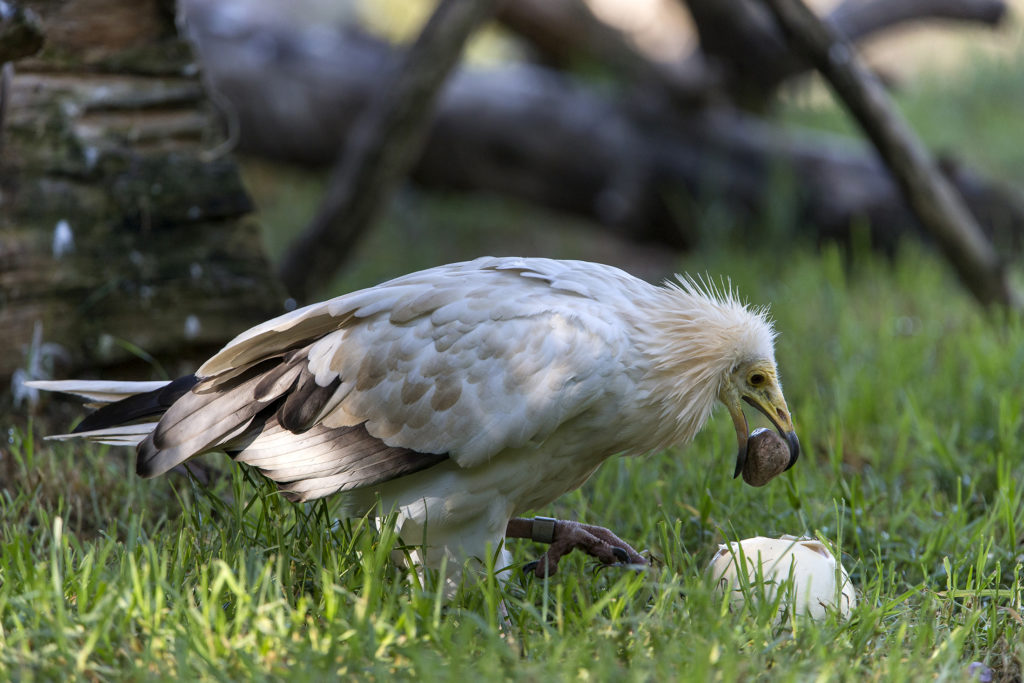
Egyptian vultures are opportunistic foragers and have learned how to break open abandoned ostrich eggs. They will hit the egg with a rock repeatedly until the shell cracks open. They have also been observed eating abandoned great white pelican eggs, which are much easier to break open than an ostrich egg.
Come to the San Diego Zoo Safari Park from August 31 through September 2 to celebrate International Vulture Awareness Day with us! You can meet one of our handsome Egyptian vultures in African Woods. Hope to see you there!
Sheila Murphy is a senior keeper at the San Diego Zoo Safari Park.




